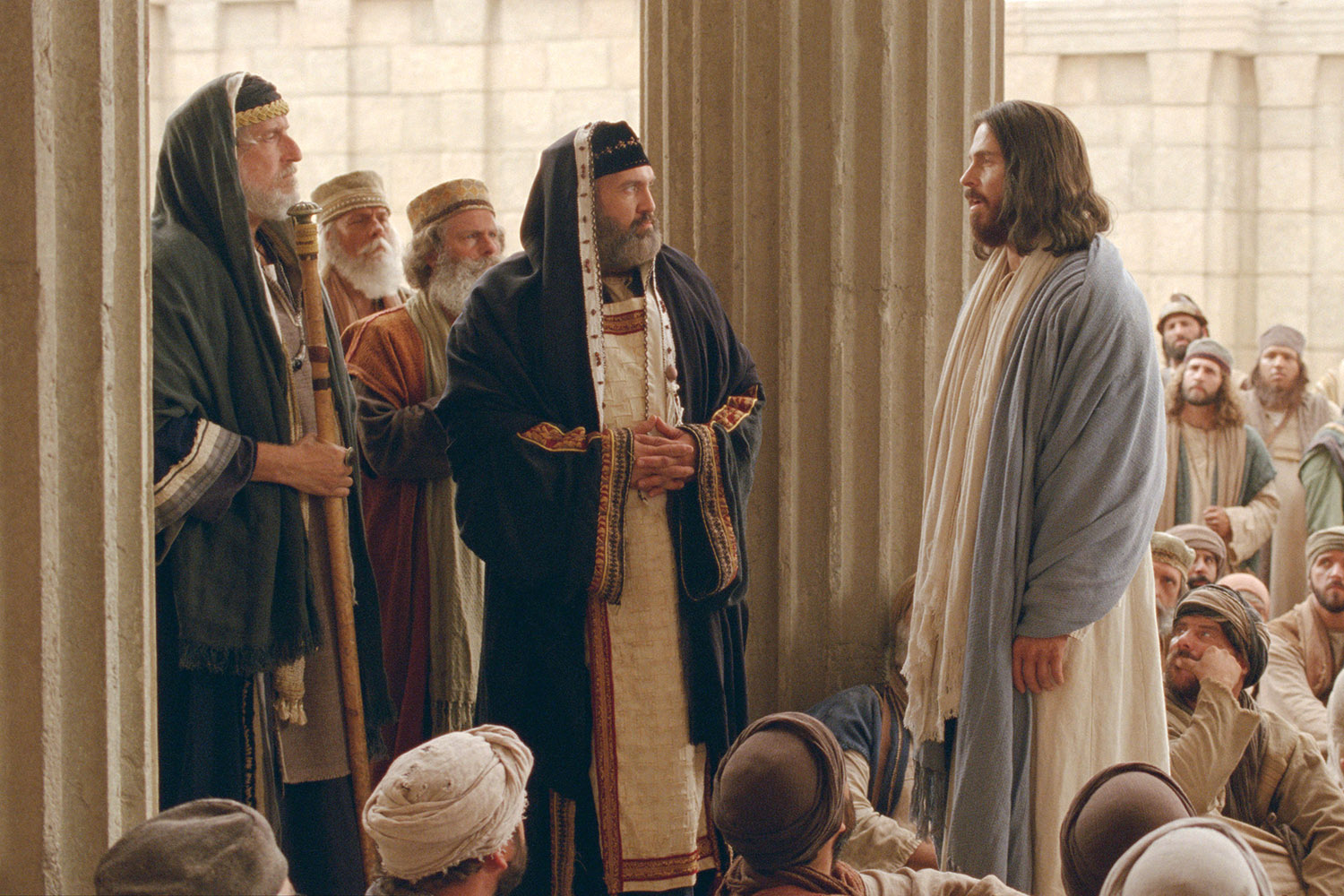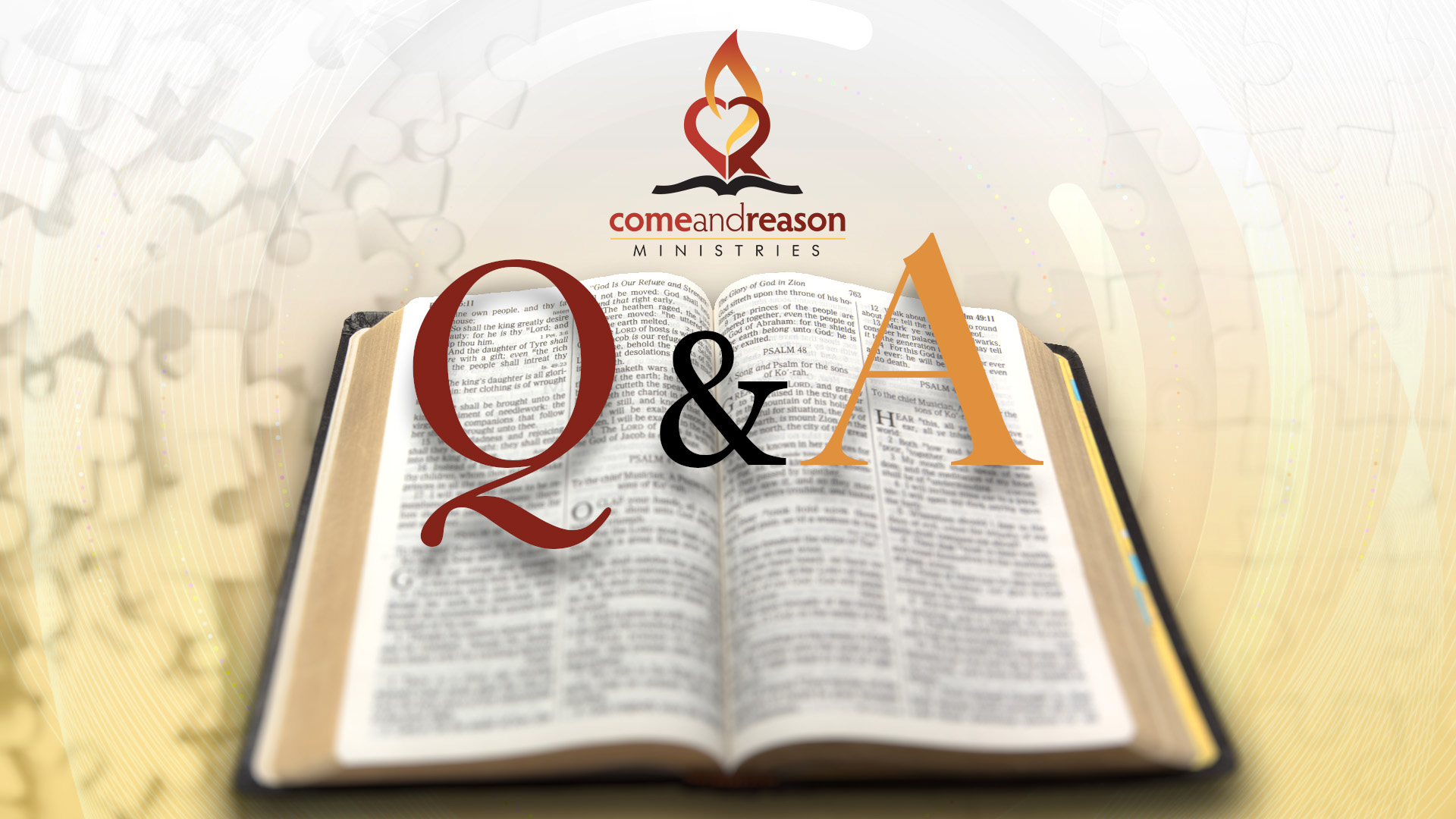In this blog, we will do an in-depth analysis of an insightful article written by E.G. White, entitled “God Made Manifest in Christ,” the article was written in 1889, shortly after the conclusion of the pivotal 1888 General Conference and published in the Signs of the Times, January 20, 1890. It was at that convention that the church’s leadership rejected the message of God’s law being design law and, instead, embraced the view that God’s law is made up of imposed rules, like those that humans make up. The leadership rejected the truth that the Ten Commandments were added and rejected the truth that through faith we become the righteousness of God (2 Corinthians 5:21), leading the church into the desert of legalism, with sin being a legal problem requiring legal solutions, including the blood payment of a human sacrifice.
When it became clear that E.G. White rejected this legal view and embraced the truths brought forth by A.T. Jones and E.J. Waggoner, the church shipped her off to Australia, where she wrote volumes on the healing model—great works such as The Desire of Ages, Steps to Christ, Thoughts from the Mount of Blessing, and Christ’s Object Lessons, all written and published during the same 1889 – 1890 time period as the following article.
My comments are in red.
At the first advent of Christ, darkness, covered the earth, and gross darkness the people. [What darkness does she mean? It was darkness about God; the Great Controversy has always been about God. The eternal gospel is the good news about God.] Light and truth seemed to have departed from among men, and Satan appeared to reign in undisputed power. Rival sects existed, and among those who professed to be the servants of God were displayed love of preeminence and strife for power and position. [Satan’s government is founded upon a few ruling elites rising above the masses to rule over and be served by them. The masses are taxed, exploited, and sacrificed to maintain the power, position, and lifestyle of the elites. But Jesus’ government is the opposite. “Christ Jesus: Who, being in very nature God, did not consider equality with God something to be grasped, but made himself nothing, taking the very nature of a servant, being made in human likeness. And being found in appearance as a man, he humbled himself and became obedient to death—even death on a cross!” (Philippians 2:5–8 NIV84). Jesus sacrificed Himself to uplift the masses.] Souls who were desirous of light were filled with perplexity and sorrow. Many were sighing, “What is truth?” Ignorance prevailed, but many were looking for something better, looking for light that would illuminate the moral darkness of the world. [Do we not find the world in this state today?] They were thirsting for a knowledge of the living God, for some assurance of a life beyond the tomb. [This is what the world is truly thirsting for today, even if they don’t know it. But because the common view of God is simply a more powerful dictator—no different than any human ruler, imposing laws and punishments, the majority of Western society has rejected God and instead pursued a course of genetic, cybernetic, and environmental enhancements to save themselves.] There were men not of the Jewish nation who prophesied that an inspired instructor would come to teach them of the truth. [God didn’t limit His revelations to the Jewish people. The Holy Spirit works on all receptive minds. The Bible focuses us on the plan of salvation and the branch of the human family through which Jesus would come, but it isn’t the total sum of all God’s revelations to humankind.] There were among the Jews men who had not polluted their integrity, who read with eager anticipation the sure word of prophecy that pointed to the advent of the Redeemer. They rejoiced in the promise that God had made to his servant Moses: “I will raise them up a prophet from among their brethren, like unto thee, and will put my words in his mouth; and he shall speak unto them all that I shall command him. And it shall come to pass, that whosoever will not hearken unto my words which he shall speak in my name, I will require it of him.”
Again they read how the Lord should anoint Him to preach good tidings unto the meek, to bind up the broken-hearted, proclaim liberty to the captives, and the opening of the prison to them that are bound, to proclaim the acceptable year of the Lord. They read how he would set judgment in the earth, how the isles should wait for his law, how the Gentiles would come to his light, and kings to the brightness of his rising.
Christ came just as prophecy had foretold. He was the “way, the truth, and the life,” and the beams of the Sun of Righteousness dispelled the moral darkness so that the honest in heart might see the truth. [What was Jesus’ goal? To reveal truth that dispels lies and sets hearts and minds free. He didn’t come to establish an earthly kingdom of imposed laws and forced obedience, but to free hearts from fear and selfishness.] The absence of outward display and worldly grandeur, called forth comments of disapprobation [condemnation] from the people. Doubt and criticism met him on every side. [Why was Jesus doubted? He was too human, too frail, too weak. He wasn’t even an Olympic champion. He wasn’t even a Mr. Universe bodybuilder. He was a real human, and how can a real human be the Son of God? He didn’t show pomp, wealth, or power over others. He didn’t show His great intelligence by speaking in ways that made others feel stupid but used the simple language of the common person. He was easy to approach and talk to. And He socialized with the outcast of society.] Christ himself had chosen the human conditions of his life. He had selected the lowliest place in society. He was the Majesty of heaven, and he knew that the world would bear sway by magnificence, carrying everything before its display and grandeur; but Jesus honored those whom the world looked upon with contempt. Christ’s birthplace was devoid of conveniences, not to speak of riches and luxury. And his entire life in this world was in keeping with the humble home of his early experience.
The Saviour of the world proposed that no attraction of an earthly character should call men to his side. The light and beauty of celestial truth alone should be the drawing power. The outward glory, the worldly honor, which attracts the attention of men, he would not assume. [Why? What was God’s goal with Jesus coming as a human? What is God working to achieve in humanity? The transformation of hearts and minds. To win us back to trust, love, understanding, and friendship. Can this occur when people are intimidated, afraid to ask questions, or awed into silence? Understand the purpose of the Roman cathedrals: They are designed to awe, intimidate, and silence the mind—to make us feel small and insignificant and to get us to be silent. The Roman liturgy, robes, and altar are all designed to intimidate, not make the approach simple and safe. And what about the governments of today? Do they want open questions, thinking, reasoning, inquiry, and persuasion—or do they want obedience upon the threat of punishment? Thus, Jesus reveals a character and government completely different from those of this world.] He made himself accessible to all, teaching the pure, exalted principle of truth as that which was only worthy of their notice. But although so humbly born, so unpretending in life, God did not leave him without a witness. The principalities of heaven did him homage. Wonders in the heavens above and signs in the earth beneath attested his power and majesty. At his baptism a voice from heaven fell upon the ears of men, declaring, “This is my beloved Son, in whom I am well pleased.” The bright glory of God in the form of a dove of burnished gold encircled him. John declared: “That was the true light, which lighteth every man that cometh into the world. He was in the world, and the world was made by him, and the world knew him not. He came unto his own, and his own received him not.”
Christ came to represent the Father. We behold in him the image of the invisible God. He clothed his divinity with humanity, and came to the world that the erroneous ideas Satan had been the means of creating in the minds of men, in regard to the character of God, might be removed. [Why did Jesus come? What was His purpose? Why was this necessary? What is the issue in the Great Controversy? He came to remove lies about God from our minds, to win us back to trust, to reveal that God’s law is the living law of love, the design protocols upon which our Creator has built life to function—only in harmony with God and His design laws for life is their life, health, and happiness.] We could not behold the glory of God unveiled in Christ and live; [Why? Is it a rule that if we peek at Him, God will kill us? Or is it something about reality—that in our sinful state, we couldn’t tolerate Jesus’ unveiled glory, that we must have the law written into our hearts and minds as a living principle in order to enter again into God’s presence and live eternally? (Hebrews 8:10).] but as he came in the garb of humanity, we may draw nigh to our Redeemer. We are called upon to behold the Lord our Father in the person of his Son. Christ came in the robe of the flesh, with his glory subdued in humanity, that lost man might communicate with him and live. Through Christ we may comprehend something of him who is glorious in holiness. Jesus is the mystic ladder by which we may mount to behold the glory of the infinite God. By faith we behold Christ standing between humanity and divinity, connecting God and man, and earth and heaven.
Christ came to save fallen man, and Satan with fiercest wrath met him on the field of conflict; for the enemy knew that when divine strength was added to human weakness, man was armed with power and intelligence, and could break away from the captivity in which he had bound him. [What holds humans captive? Lies about God and our own carnal natures, our fears, guilt, shame, and insecurities, which are magnified by believing Satan’s lies. Christ came to set us free from those lies. What is the payment called that frees one from captivity? A ransom; the ransom is the truth about God and the new sinless human nature that Christ, as a human, developed. He offers both to us as a free gift. These realities are metaphorically represented in the bread and wine, the flesh and blood. The bread/flesh is the living Word made flesh, the truth that Jesus lived and revealed; the wine/blood is the sinless human life that Jesus developed. It is these that we may receive from Him in faith, and we become partakers of the divine nature (2 Peter 1:4). Thus, the ransom price is paid to us—we who needed the truth and a new sinless human nature that we could not develop ourselves. This is righteousness by faith. This is the message of 1888, which the penal/legal view obstructs.] Satan sought to intercept every ray of light from the throne of God. He sought to cast his shadow across the earth, that men might lose the true views of God’s character, and that the knowledge of God might become extinct in the earth. [Has Satan had success in obstructing the true views of God on earth? How? By infecting Christianity with the imposed-law lie that teaches God’s laws function like human laws, imposed rules that require God to use divine power to inflict just punishment upon sinners. Thus, the imposed-law view represents God as a dictator.] He had caused truth of vital importance to be so mingled with error that it had lost its significance. The law of Jehovah was burdened with needless exactions and traditions, and God was represented as severe, exacting, revengeful, and arbitrary. [Presenting God’s law as imposed misrepresents God as the source of inflicted punishments.] He was pictured as one who could take pleasure in the sufferings of his creatures. The very attributes that belonged to the character of Satan, the evil one represented as belonging to the character of God. Jesus came to teach men of the Father, to correctly represent him before the fallen children of earth. Angels could not fully portray the character of God, but Christ, who was a living impersonation of God, could not fail to accomplish the work. The only way in which he could set and keep men right was to make himself visible and familiar to their eyes. [What does “set right” mean? Justification. What does “keep right” mean? Sanctification. And what was the only way to achieve these outcomes? By revealing the truth about God, which destroys the lies and wins us back to trust! Then, in that trust, we receive the indwelling Spirit that takes the character of Christ (which is God’s law of love lived out perfectly as a human) and reproduces it in us, such that we die to the old life of fear and selfishness and we “no longer live, but Christ lives in” us (Galatians 2:20).] That men might have salvation he came directly to man, and became a partaker of his nature.
The Father was revealed in Christ as altogether a different being from that which Satan had represented him to be. [But which view of God dominates the church today?] Said Christ, “Neither knoweth any man the Father, save the Son, and he to whomsoever the Son will reveal him.” The love of Jesus, expressed for the fallen race in his life of self-denial and sufferings, is the manifestation of the Father’s love for a sinful, fallen world. Christ endured shame and grief and death for those who despised his love and trampled upon his mercy. He paid the debt of man’s transgression upon the cross of Calvary with his own precious blood. [What was the debt? To whom was it paid? Why was it necessary to pay it? Did the Father need truth revealed to Him in order to free Him from Satan’s lies? Did sinful humans need that truth? And did the Father need a new sinless nature developed for Him, or did the species human need a human being to overcome sinfulness, purge it, and restore God’s law of love into the creation? Jesus is the second Adam, the one human being who developed a sinless human character, eradicating the infection of fear and selfishness. Jesus took upon Himself our terminal condition and eradicated it at the cross, when He was tempted by the infection of selfishness to “save self” but instead, He chose to love, to give His life freely. In Christ, love destroyed selfishness in the species human. Thus Christ repaired the damage by healing the condition; this is reparation of the debt.] The men of his own nation, the leaders of the people, were so ensnared by the deceptions of Satan that the plan of redemption for a fallen race seemed to their minds indistinct and unexplainable. [How many Christians are lost in the same confusion today—with imposed-law constructs, penal systems, with their use of Latin words that are contradictory, confusing, and represent God as the source of inflicted death under the guise of so-called justice?]
Man was God’s workmanship, made after his image, endowed with talents, and fitted for a high destiny. But Satan has worked to obliterate the divine image, and to impress his own image instead of the image of God in man’s nature. [Is this describing a legal problem, or a change in the state of being? When Adam and Eve sinned, were they still loyal, faithful, selfless beings operating upon God’s law of love but who now had a legal problem—or did they actually change as people, now infected with Satanic principles of fear and selfishness, the survival drives that without remedy would result in ruin and death? They owed their existence to God, not in some legal way, but it in fact, by the reality of their creation by God. And life was built by God to operate upon love, thus their very life required harmony with His design law if they wanted to live. Thus they owed Him all that they were, their love, their loyalty, and their devotion. But because of sin, because of fear and selfishness, they were no longer capable of returning such loyal love to God. Thus, Jesus came and took up the mission of fulfilling this requirement for life—of revealing in humanity the truth about God, restoring the image of God into the living temple that God constructed to house His image.] Jesus condescended to humble himself, to take human nature, and by uniting divinity with humanity, he proposed to elevate man in the scale of moral value. [How was He to elevate us? By restoring God’s design law into humanity and sharing His immortal life with us.] All heaven was poured out in the gift of God’s dear Son. Through faith in him the sinner could be justified, and God could yet be just in justifying the sinner; for Christ had become a propitiation for the sins of the repentant soul. [What does this mean? Justification is setting right that which is not right. But how? By restoring God’s design law of love into us, and Jesus was the means of doing this in reality. This is what propitiation is—the way and means of restoring sinners to unity with God. “God made him who had no sin to be sin for us, so that in him we might become the righteousness of God” (2 Corinthians 5:21 NIV84). We actually become righteous, we are not “declared” righteous while we remain unrighteous as the false legal model proposes.]
The only plan that could be devised to save the human race was that which called for the incarnation, humiliation, and crucifixion of the Son of God, the Majesty of heaven. After the plan of salvation was devised, Satan could have no ground upon which to found his suggestion that God, because so great, could care nothing for so insignificant a creature as man. The redemption of man is a wonderful theme, and the love manifested to the fallen race through the plan of salvation, can be estimated only by the cross of Calvary. The depth of this love even angels cannot sound. That God could consent to become flesh, and dwell among fallen beings, to lift them up from their helplessness and despair, is an unfathomed mystery. [What kind of kingdom is this? What kind of government? What kind of law? Is this the elites ruling over the masses, or the Elite of elites giving and sacrificing self to uplift the masses? Understand that all human governments are Satan’s because they use imposed law, punishments, and seek to exploit the masses to elevate the few.] He whose kingdom is an everlasting kingdom, whose dominion endureth throughout all generations, made himself to be sin for us that he might lift up all that are bowed down, and give life to those who are ready to perish.
Oh, that men might open their minds to know God as he is revealed in his Son! Truth came forth from the lips of Jesus, uncorrupted with human philosophy. His words were from heaven, such as mortal lips had never spoken nor mortal ears ever heard. His heart was an altar on which burned the flames of infinite love. [An allusion to the golden altar, upon which incense is burned, in the sanctuary. And this is to be our hearts also.] Goodness, mercy, and love were enthroned in the breast of the Son of God. He set up his tabernacle in the midst of our human encampment, pitched his tent by the side of the tents of men, that he might dwell among them and make them familiar with his divine character and love. [Again, she is referencing the Old Testament sanctuary theater, which point us to the reality of Jesus in the New Testament.] No one could love Christ and pay homage to him without serving and honoring the infinite God. Those who had an appreciation of the character and mission of Christ, were filled with reverence and awe, as they looked upon him and felt that they were looking upon the temple of the living God. Officers were sent to take the Son of God, that the temple in which God was enshrined might be destroyed. [Where is God to be enshrined? In the human being!] But as they drew near and heard the words of divine wisdom that fell from his lips, they were charmed, and the power and excellence of his instruction so filled their hearts and minds that they forgot the purpose for which they had been sent. Christ revealed himself to their souls. Divinity flashed through humanity, and they returned so filled with this one thought, so charmed with the ideas he had presented, that when the leaders of Israel inquired, “Why have ye not brought him?” they replied, “Never man spake like this man.” They had seen that which priests and rulers would not see—humanity flooded with the light and glory of divinity. Those who would behold this glory would be drawn to love Jesus and to love the Father whom he represented. Christ exalted the character of God, attributing to him the praise, and giving to him the credit, of the whole purpose of his own mission on earth—to set men right through the revelation of God. [What was Jesus’ mission? To set right (justification) human beings—through what? A legal payment to the Father? No! A legal payment was never required because God’s law doesn’t function like human law. What was required was restoration to God’s design for life. The requirement has always been perfect harmony with God’s law, which required God’s law be restored into humanity. Jesus did this as a human for us, restoring the image of God in humanity, revealed the truth of God to us to dispel the lies and win us to trust. And when we trust Him, He shares Himself with us, we become partakers of the divine nature, and our temples are cleansed.] In Christ was arrayed before men the paternal grace and the matchless perfections of the Father. In his prayer just before his crucifixion, he declared, “I have manifested thy name.” “I have glorified thee on the earth; I have finished the work which thou gavest me to do.” When the object of his mission was attained—the revelation of God to the world—the Son of God announced that his work was accomplished, and that the character of the Father was made manifest to men.









 using your credit or debit card (no PayPal account needed, unless you want to set up a monthly, recurring payment).
using your credit or debit card (no PayPal account needed, unless you want to set up a monthly, recurring payment). instead?
instead?